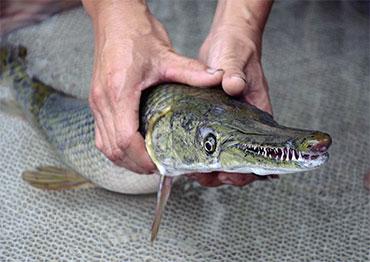Bigger threats come from the release of exotic species or poached wild animals, which disrupt ecosystems.
Professor Wang Fang with the School of Life Sciences at Fudan University cautioned that because of the different ecosystems caused by geographical and climate conditions, native species have different living habits and population sizes. The random release of organisms of “unknown origin” in an unassessed natural environment would have a huge impact. “Take foxes as an example. I once saw foxes being released in the wild near Miaofeng Mountain in southwestern Beijing. They are not a native species, but are imported from Russia. Some of them are scrawny from lack of food and they go down the mountain to scavenge for food. I even saw dead foxes in the neighborhood,” Wang said.
The death toll from catching wild birds is huge due to the use of mist nets that trap them in flight. “Analysis shows that for every wild bird captured, 10 die. A lot of birds are caught accidentally, and this causes untold ecological damage,” he said.
The Chinese Field Conservation Alliance published an article in September 2022 pointing out that reckless animal release causes much more animal suffering than it prevents, undermining the original intention of the Buddhist ritual. The Alliance said that responsible and scientific animal release activities should follow the Guidelines for Reintroductions and Other Conservation Translocations published by the International Union for Conservation of Nature.
He Xin, an associate researcher at the Shanghai Museum of Natural History, has long been concerned about animal release activities. He told Southern Weekly in late September that to meet the demand for animal releases, many sellers trap wildlife. “In fact, many released birds are caught in the wild,” He said.
He has observed that the red-eared slider turtle is one of the most released species in China. The turtle, which is native to North America, is one of the world’s 100 worst invasive alien species according to the Global Invasive Species Database.
“It has no natural enemies and can breed quickly,” He said. As turtles represent longevity, good luck and wisdom in traditional Chinese culture, people regard their release as a way to dispel disaster, increase happiness and prolong life. “There is no problem with releasing five turtles, but if 500 are released, it poses a serious threat to local species,” Li Bo, director of the Hainan International Wildlife Conservation Center, told Southern Weekly.
According to Professor Wang Fang, releasing large numbers of mud fish and eels causes riverbed erosion and eutrophication, leading to excessive algae due to increased excrement and nutrients in the water. “When you get these problems, both native creatures and released species will die in most cases,” Wang said.
As the practice of animal release gains popularity, media has frequently reported the negative impact. There have been several mass releases of 500, even 1,000 snakes that after infesting villages were killed. In August 2022, authorities in Ruzhou, Henan Province drained an entire lake to catch an alligator gar, one of the largest freshwater fish from North America that has no natural predators in China. Suspected sightings of the fish have been reported in other cities since.
In some parks and beside rivers, signs are posted which warn people not to release species in the water.
The issue has aroused attention from Buddhist followers. One of them, Zou Yuqiong, said that she recommended people release animals at unfixed times and locations. “We should purchase released animals from random vendors... and also consider the local ecological environment and choose proper living spaces for potential released animals, so as not to destroy the local ecology,” Zou said.

 Old Version
Old Version


